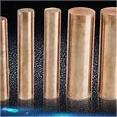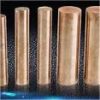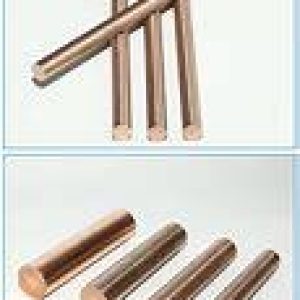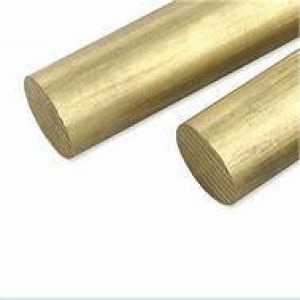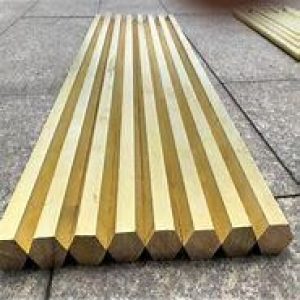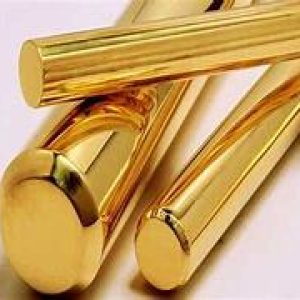Overview of alumina copper rod / alumina-copper bar
Copper rods are cylindrical or near-cylindrical shapes made from pure copper or copper alloys. Known for their excellent electrical and thermal conductivity, malleability, and resistance to corrosion, copper rods find wide application across various industries. These rods can be produced through several processes, including casting, extrusion, or continuous casting, and can be supplied in different sizes, lengths, and tempers (soft, half-hard, hard) to meet specific application requirements.
Features of alumina copper rod / alumina-copper bar
-
High Conductivity: Copper is a superior conductor of both electricity and heat, making it ideal for electrical wiring, heat exchangers, and cookware.
-
Corrosion Resistance: Copper forms a protective oxide layer when exposed to the atmosphere, which prevents further corrosion, ensuring longevity in harsh environments.
-
Malleability and Ductility: Copper rods can be easily formed, bent, or shaped without fracturing, allowing for versatile fabrication processes.
-
Recyclability: Copper is highly recyclable, with no degradation in performance, contributing to sustainability efforts.
-
Wide Range of Alloys: Copper can be combined with other metals like tin, zinc, aluminum, or nickel to form alloys like brass, bronze, or cupronickel, enhancing specific properties such as strength, hardness, or resistance to specific corrosive media.
Applications of alumina copper rod / alumina-copper bar
-
Electrical Industry: Copper rods are widely used in electrical cables, transformers, and busbars due to their high conductivity.
-
Construction: Used for plumbing, roofing, and electrical installations in buildings due to its durability and resistance to corrosion.
-
Heat Exchangers: In HVAC systems, refrigeration units, and industrial heat exchange applications because of copper’s efficient heat transfer properties.
-
Manufacturing and Machining: Copper rods serve as raw material for producing various components in machinery, automotive parts, and hardware.
-
Cookware and Utensils: Due to its heat conductivity and non-reactive nature, copper is used in high-end cookware and kitchen utensils.
-
Jewelry Making: Pure copper or copper alloys are used in jewelry creation for their aesthetic appeal and workability.
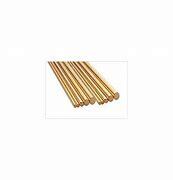
(alumina copper rod / alumina-copper bar)
Parameters of alumina copper rod / alumina-copper bar
The specific properties of an aluminumCu rod or bar can vary depending on the composition and manufacturing process used. However, some general parameters that can affect its properties include:
* Critical temperature (CT): This is the temperature at which the metal changes from a solid to a liquid state. AluminaCu rods with higher CT values tend to have higher melting points and are therefore less likely to flow under normal conditions.
* Yield strength: This is the maximum stress a material can withstand before it breaks. AluminaCu bars with higher yield strengths are stronger and more durable than their equivalent aluminums bars without Cu.
* Thermal conductivity: This is the ability of a material to transfer heat quickly to its surroundings. AluminaCu rods with high thermal conductivity are better suited for applications where rapid cooling is required, such as in high-temperature heating systems.
* Mechanical properties: These are the physical characteristics of a material, such as its weight, density, hardness, and elasticity. AluminaCu rods and bars with high mechanical properties will be able to withstand more stress and resist deformation over time.
Overall, the properties of an aluminumCu rod or bar depend on a combination of these factors, and careful consideration of these parameters is important for selecting the right material for a particular application.

(alumina copper rod / alumina-copper bar)
Company Profile
Copper Channel is a trusted global metal material supplier & manufacturer with over 12-year-experience in providing super high-quality copper products and relatives products.
The company has a professional technical department and Quality Supervision Department, a well-equipped laboratory, and equipped with advanced testing equipment and after-sales customer service center.
If you are looking for high-quality copper materials and relative products, please feel free to contact us or click on the needed products to send an inquiry.
Payment Methods
L/C, T/T, Western Union, Paypal, Credit Card etc.
Shipment
It could be shipped by sea, by air, or by reveal ASAP as soon as repayment receipt.
FAQs of alumina copper rod / alumina-copper bar
Q: What are the common sizes of alumina copper rod / alumina-copper bar available?
A: alumina copper rod / alumina-copper bar is typically available in diameters ranging from 1/8 inch to several inches and lengths up to several meters, depending on the manufacturer and application requirements.
Q: Is alumina copper rod / alumina-copper bar suitable for outdoor use?
A: Yes, copper’s natural corrosion resistance makes it suitable for outdoor applications where exposure to weather elements is expected.
Q: Can alumina copper rod / alumina-copper bar be welded or soldered?
A: Yes, alumina copper rod / alumina-copper bar can be easily welded and soldered using appropriate techniques and materials, making them suitable for complex assemblies.
Q: How does the cost of alumina copper rod / alumina-copper bar compare to other conductive materials?
A: While copper is more expensive than some other metals, its superior conductivity and long-term reliability often justify the cost, especially in electrical applications where efficiency is crucial.
Q: Are there any environmental concerns with using alumina copper rod / alumina-copper bar?
A: Copper is considered an environmentally friendly material due to its high recyclability and low toxicity. However, proper disposal of copper products should still follow environmental guidelines to prevent pollution.
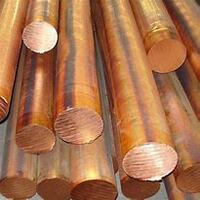
(alumina copper rod / alumina-copper bar)
